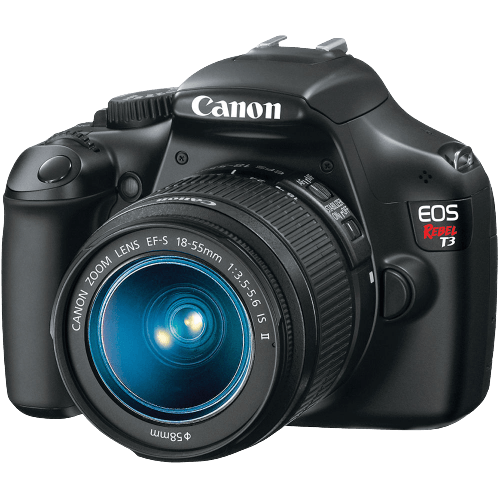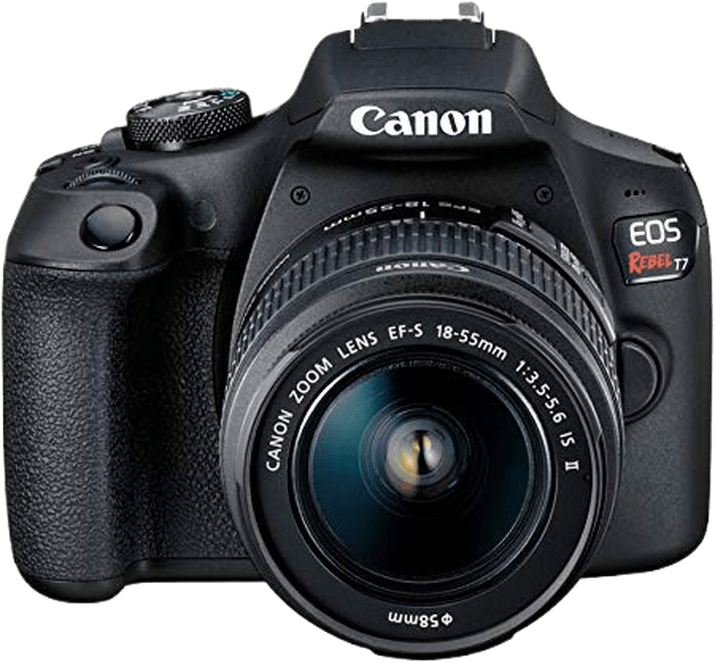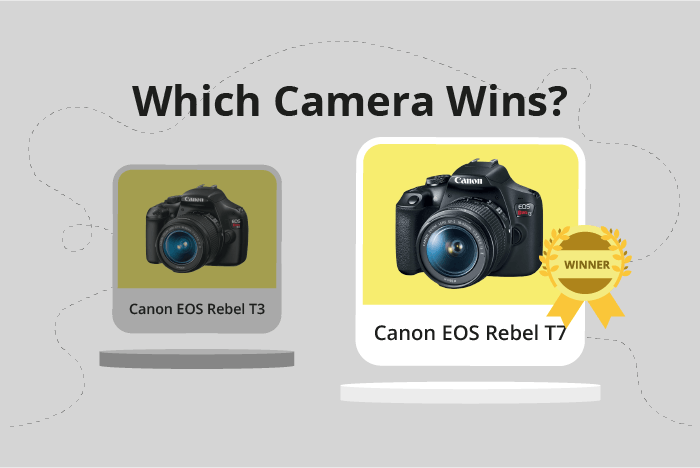Canon EOS Rebel T3 / 1100D vs EOS Rebel T7 / 2000D Comparison
Canon EOS Rebel T3 / 1100D

Canon EOS Rebel T7 / 2000D

Canon EOS Rebel T3 vs T7 Overview and Optics
The Canon EOS Rebel T7 / 2000D emerges as the winner in the optics comparison with a score of 56/100, a 13-point lead over the Canon EOS Rebel T3 / 1100D’s score of 43/100. Both cameras share some common specifications, such as a CMOS sensor, APS-C sensor size, Canon EF-S lens mount, and the absence of image stabilization. Their shooting speed is also the same, at 3 frames per second.
The T7’s superiority in optics can be attributed to its higher megapixel count of 24.1, compared to the T3 / 1100D’s 12.2 megapixels. This higher resolution allows for more detailed and sharper images. Additionally, the T7 / 2000D has a more advanced processor, the Digic 4+, which offers better image processing capabilities. The T7 / 2000D also boasts a higher DXOMARK score for its sensor, at 71 compared to the T3’s 62, indicating better overall sensor performance.
On the other hand, the T3 does not have any significant advantages over the T7 in terms of optics. Both cameras have the same shooting speed and lack image stabilization, making their performance in these aspects equal.
Taking all of these factors into consideration, it is clear that the Canon EOS Rebel T7 provides better optical performance than the Canon EOS Rebel T3. The T7’s higher megapixel count, more advanced processor, and superior sensor performance make it a more suitable choice for photographers seeking higher-quality images. The T3, while not as impressive in the optics department, still offers an acceptable performance for those on a tighter budget or with less demanding requirements.
Canon EOS Rebel T3 vs T7 Video Performance
The Canon EOS Rebel T7 emerges as the winner in the video capabilities comparison, scoring 43 out of 100, while the Canon EOS Rebel T3 scores 34 out of 100. Both cameras share some common video specifications, such as a maximum video frame rate of 30fps and the absence of built-in time-lapse functionality.
The Rebel T7 outperforms the Rebel T3 / 1100D in terms of video resolution, offering Full HD quality with maximum video dimensions of 1920 x 1080. This higher resolution results in clearer and more detailed videos when compared to the Rebel T3 / 1100D, which only provides Standard HD with maximum video dimensions of 1280 x 720.
While the Rebel T3 / 1100D falls short in terms of resolution, it still offers decent video quality for casual users and beginners who may not require the higher resolution provided by the Rebel T7 / 2000D. However, for those who prioritize video quality and detail, the Rebel T7 / 2000D is clearly the superior choice.
Taking both cameras’ video capabilities into account, the Canon EOS Rebel T7 / 2000D is the better option for users seeking higher video quality and resolution. On the other hand, the Canon EOS Rebel T3 / 1100D remains a viable choice for casual users or beginners who are content with Standard HD video quality.
Canon EOS Rebel T3 vs T7 Features and Benefits
The Canon EOS Rebel T7 emerges as the winner, scoring 41/100 compared to the Canon EOS Rebel T3’s 34/100 in the features category. Both cameras share some specifications, such as the absence of a touchscreen, GPS, and Bluetooth. However, the T7 / 2000D boasts superior features in several other aspects.
The winning camera, the T7 / 2000D, has a larger screen size of 3 inches, compared to the T3’s 2.7 inches. Additionally, the T7 / 2000D screen resolution is significantly higher, with 920,000 dots, while the T3 has only 230,000 dots. The T7 / 2000D also has a flip screen, allowing for greater flexibility in shooting angles. Another advantage of the T7 is its Wi-Fi capability, enabling easier sharing of images and remote control of the camera.
The T3 / 1100D, despite its lower score, still has some merits. It shares the lack of a touchscreen, GPS, and Bluetooth with the T7 / 2000D. However, these features may not be essential for some users, and the T3 / 1100D could still be a suitable choice based on other factors such as price or general specifications.
Comparing the two cameras, the Canon EOS Rebel T7 / 2000D is the clear winner in terms of features, offering a larger screen size, higher screen resolution, flip screen, and Wi-Fi connectivity. While the Canon EOS Rebel T3 / 1100D falls short in these areas, it could still be a viable option for those who prioritize other aspects of a camera, such as price or general specifications.
Canon EOS Rebel T3 vs T7 Storage and Battery
The Canon EOS Rebel T3 / 1100D wins in the storage and battery category with a score of 32/100, while the Canon EOS Rebel T7 / 2000D receives a score of 27/100. Both cameras share identical storage features, having one memory card slot each and accepting SD, SDHC, and SDXC cards. Additionally, neither camera has USB charging capabilities.
The T3 / 1100D outperforms the T7 / 2000D in battery life, offering 700 shots per charge compared to the T7 / 2000D’s 500 shots. Both cameras use the same LP-E10 battery type. The T7 / 2000D does not have any advantages in the storage and battery department compared to the T3 / 1100D.
Considering the differences in battery life and the identical storage features, the Canon EOS Rebel T3 / 1100D proves to be the better choice in terms of storage and battery performance.
Canon EOS Rebel T3 vs T7 – Our Verdict
Are you still undecided about which camera is right for you? Have a look at these popular comparisons that feature the Canon EOS Rebel T3 / 1100D or the Canon EOS Rebel T7 / 2000D:

